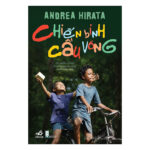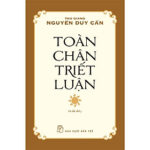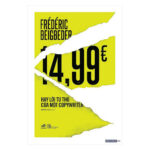“Cuộc sống có những khoảnh khắc đen tối, nhưng chính những khoảnh khắc đó tô điểm nên sự quý giá của ánh sáng.”
Bản Năng của Mitsuyo Kakuta là một tác phẩm văn học Nhật Bản đầy ấn tượng, với sự kết hợp tinh tế giữa hình ảnh đẹp và nội dung sâu sắc. Tác giả đã đưa người đọc vào một thế giới tâm lý phức tạp, nơi mà những bí mật, mâu thuẫn, và bản năng loài người được khám phá một cách tinh tế.
Truyện kể về cuộc sống của nhân vật chính, một phụ nữ hiện đại với nhiều lớp vỏ bên ngoài, nhưng qua từng trang sách, chúng ta được khám phá lớp lớp bí mật, mâu thuẫn trong tâm hồn và quá khứ của cô. Cách tác giả xây dựng nhân vật và tiết lộ thông tin theo từng giai đoạn làm cho câu chuyện trở nên cuốn hút và hấp dẫn.Làm mẹ là thiên chức của phụ nữ, một đề tài được khai thác tinh tế. Điều khiến bản thân thấy thú vị chính là miêu tả bức tranh một xã hội phức tạp của một nước Nhật hiện đại khi con người quẩn quanh với sự cô độc, tuyệt vọng trong hôn nhân, dẫn đến ngoại tình và ảnh hưởng đến cả thế hệ tiếp theo như cái giá phải trả của sự phát triển là đạo đức bị biến dạng và lệch lạc. Tất cả đều xoay quanh nhân vật Miwako, từ lúc mở màn chuỗi bi kịch của đời mình khi thực hiện việc đánh cắp đứa trẻ và cuộc trốn chạy diễn ra suốt cuộc đời của cô gái.
“Giả sử tôi đang đứng ở ngã ba đường và được ban cho hai lựa chọn như trên, tôi chắc mình sẽ không màn đau khổ, không màn đến những sai lầm và ngay lập tức chọn con đường dẫn đến Kaoru (tên đứa trẻ được Miwako đặt sau khi đánh cắp). Biển Inland luôn lặng sóng…Nó là một tấm gương không phản chiếu thứ gì. Chỉ là một chiếc đĩa bạc trống. Mặt trờ trượt qua mặt phẳng bạc này khi nó lắng xuống! …Ổn thôi, mọi thứ sẽ ổn thôi…khi mà nổi cô độc là thứ mà người ta có thể sống cùng với nó”
Mitsuyo Kakuta đã sử dụng ngôn ngữ tinh tế và hình ảnh sinh động để mô tả cảm xúc và tâm trạng của nhân vật. Sự chi tiết và mô tả tinh tế không chỉ làm nổi bật vẻ đẹp của văn học Nhật Bản mà còn giúp độc giả hiểu sâu hơn về tâm lý nhân vật.
Tác phẩm này không chỉ là một câu chuyện giải trí, mà còn là một tác phẩm nghệ thuật, đưa người đọc suy ngẫm về bản chất của con người và khả năng tự thấu hiểu. Bản Năng của Mitsuyo Kakuta là một cuốn sách đáng đọc, nó mở ra một cửa sổ mới cho văn hóa và tâm hồn Nhật Bản.
***
“Life has its dark moments, but it is these very moments that highlight the preciousness of light.”
Mitsuyo Kakuta’s “Bản Năng” is an impressive work of Japanese literature, skillfully combining beautiful imagery with profound content. The author takes readers into a complex psychological world where secrets, conflicts, and human instincts are delicately explored.
The story revolves around the life of the protagonist, a modern woman with many outer layers, but through each page, we discover layers of secrets and conflicts within her soul and past. The author’s method of character development and gradual revelation keeps the story engaging and compelling.
Motherhood, portrayed as a woman’s duty, is a theme delicately explored. What makes it intriguing is the depiction of the complex society of modern Japan, where individuals grapple with loneliness, marital despair leading to infidelity, and the impact on the next generation, representing the moral cost of societal development.
All revolves around the character Miwako, starting with the dramatic theft of a child and her lifelong journey of escape. The narrative often presents her reflections on the choices she makes, and in one poignant moment, she contemplates standing at a crossroads, facing two choices, and muses on the solitude one can live with. She says, “Suppose I am standing at a crossroads and given two choices as above, I am sure that I will not hesitate, will not be afraid of pain, and will immediately choose the path that leads to Kaoru (the name she gave the stolen child). The Inland Sea is always calm… It is a mirror that reflects nothing. Just a drum made of silver. The flat surface of silver passes by when it settles down! …It’s okay, everything will be okay…when solitude is something one can live with.”
Mitsuyo Kakuta employs a sophisticated language and vivid imagery to describe the emotions and moods of the characters. The detailed and nuanced descriptions not only highlight the beauty of Japanese literature but also help readers gain deeper insights into the characters’ psychology.
This work is not just for entertainment; it is a piece of art that prompts readers to contemplate the essence of humanity and the ability to understand oneself. “Bản Năng” by Mitsuyo Kakuta is a book worth reading, providing a window into Japanese culture and the human soul.






